Key takeaways:
- Constructive criticism is a growth opportunity, helping to improve skills and enhance work quality.
- Embracing feedback fosters resilience and can build a supportive community among peers.
- Active listening, asking clarifying questions, and taking time before responding can transform feedback into productive dialogue.
- Viewing criticism as a learning experience can lead to personal growth and stronger creative outcomes.

Understanding constructive criticism
Constructive criticism is more than just feedback; it’s an opportunity for growth. I remember a time when a peer pointed out that my infographic was too cluttered. At first, it stung, but then I realized that this input could make my work much clearer and more effective.
When we receive constructive criticism, it can feel like a personal attack, but it’s important to shift our perspective. I often ask myself, “How can this feedback make my work stronger?” This simple question helps me embrace critiques as stepping stones rather than stumbling blocks. It allows me to see that criticism often comes from a place of wanting to help.
It’s essential to differentiate between criticism that tears down and constructive criticism that builds up. Reflecting on my experiences, some of the most impactful feedback I received pushed me out of my comfort zone, challenging me to rethink my designs. Each time I took that leap, I found the results were worth the initial discomfort of hearing the hard truths.
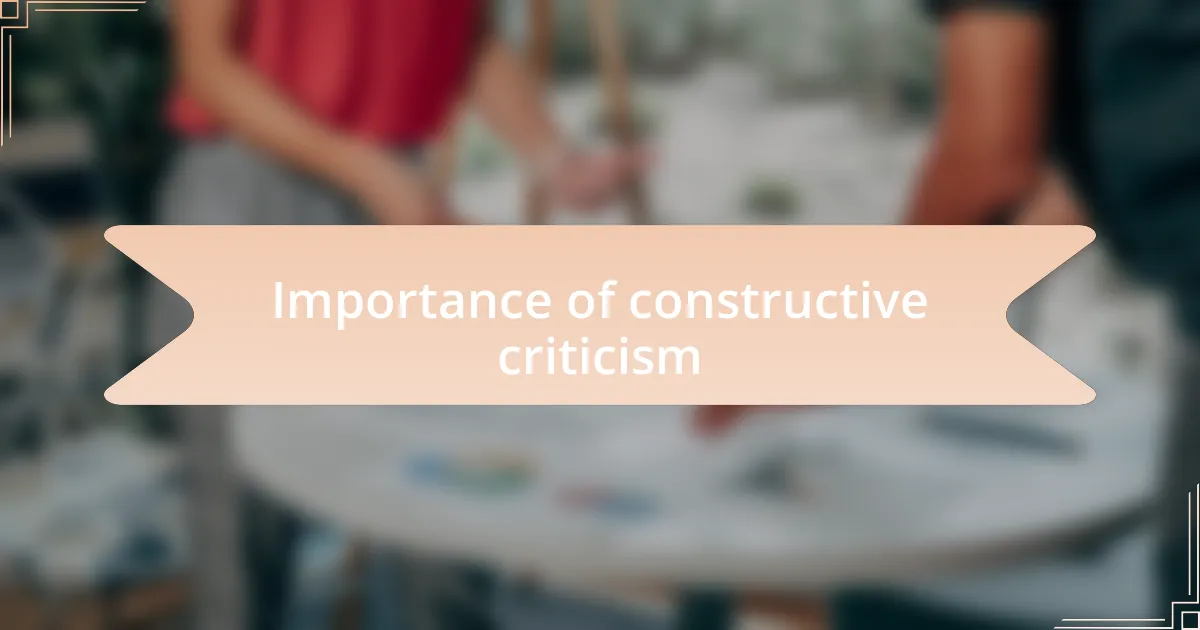
Importance of constructive criticism
Constructive criticism plays a pivotal role in refining our skills and enhancing our work. I remember a project where a mentor pointed out that my choice of colors drowned out the message rather than highlighted it. It was painful to hear initially, but seeing the difference in my next infographic was incredibly rewarding. Isn’t it fascinating how a simple observation can lead to profound change?
Embracing constructive criticism not only improves our current projects but also shapes our future endeavors. I often reflect on feedback that I once resisted, recognizing that it often stems from a genuine desire to see me succeed. What if we viewed every piece of criticism as a roadmap guiding us toward improvement? This shift in mindset can transform how we approach our craft.
Moreover, accepting constructive criticism fosters a growth mindset that extends beyond our immediate work. For instance, I found that discussing critiques with fellow designers led to deeper conversations about design principles and audience engagement. Have you ever noticed how sharing experiences and reflections creates a community of learning? That connection not only strengthens our skills but also builds lasting relationships in our field.
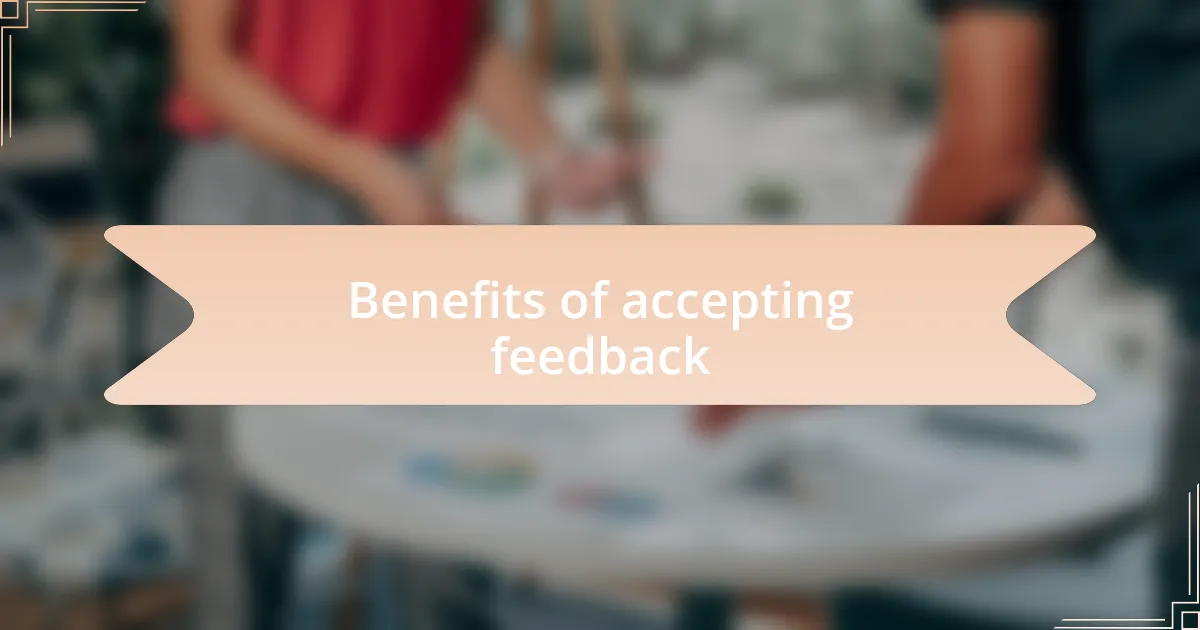
Benefits of accepting feedback
Feedback opens doors to new perspectives that we might not consider on our own. I remember a time when a colleague suggested a different layout for my infographic. Initially, I was reluctant, feeling attached to my design. However, after incorporating their suggestion, I realized the clarity it brought. Doesn’t it remind you how collaborating can elevate our work in unexpected ways?
Accepting feedback also cultivates resilience. I’ve faced critiques that felt overwhelming, yet each time, I learned to separate my ego from my work. Giving myself permission to grow from those comments was liberating. It’s almost like building a muscle; each piece of criticism strengthens my ability to respond constructively. Isn’t it empowering to know that with every challenge, we become more adaptable and confident?
Another aspect of embracing feedback is the network of support it creates. Whenever I seek input on my infographics, I often discover shared experiences and insights from those around me, turning the feedback session into a rich learning opportunity. It’s fascinating how this process transforms mere feedback into a collaborative journey. Have you ever realized that every discussion isn’t just about improvement but also about bonding and learning together? That’s a powerful benefit of accepting feedback.
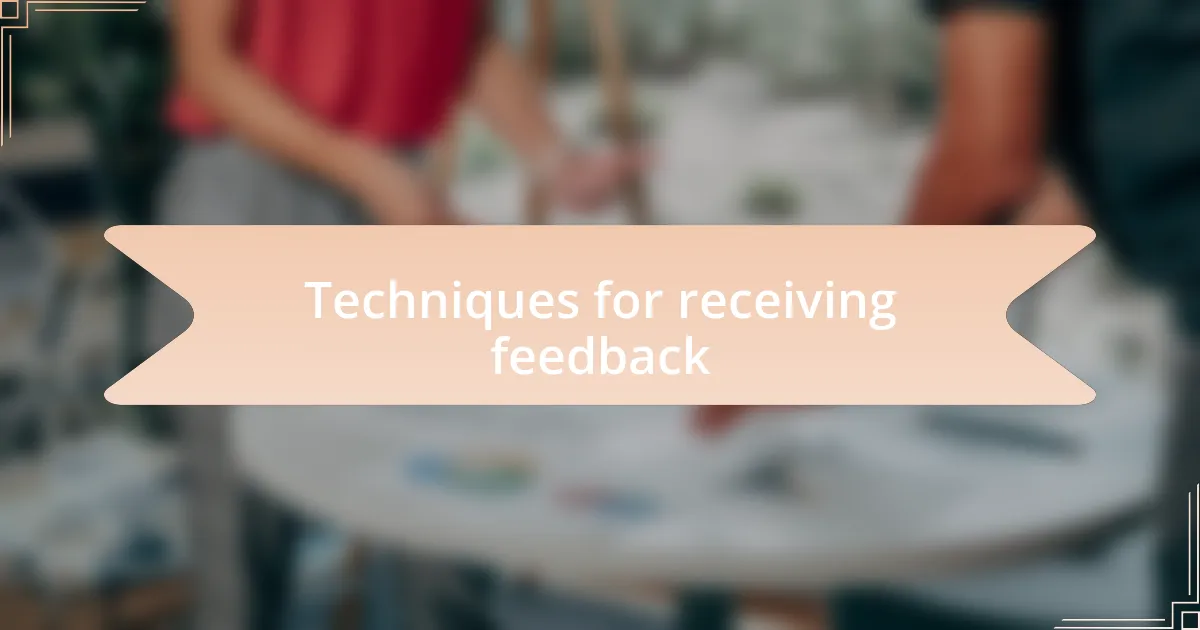
Techniques for receiving feedback
One technique I often use when receiving feedback is to actively listen and reflect before responding. In the past, after sharing an infographic draft, I found myself instinctively defending my choices as soon as feedback arrived. However, taking a moment to pause and really absorb what was being said changed everything for me. Have you ever noticed how this simple shift can turn a defensive conversation into a productive dialogue?
Another effective technique is to ask clarifying questions. When I receive feedback, I ensure I fully understand the critique by asking for specific examples or suggestions for improvement. I recall a time when a peer pointed out that my infographic was too busy; rather than feeling disheartened, I asked what areas they found overwhelming. This not only clarified their point but led me to design a more streamlined and visually appealing product. Isn’t it satisfying when a little curiosity transforms a critique into actionable insights?
Lastly, I find it beneficial to keep a feedback journal. Each time I get input on my work, I jot down the key points along with my emotional reactions. This practice helps me track patterns in feedback and my responses over time. I remember flipping back a few months and realizing how much stronger I’d become in accepting constructive criticism. Have you considered documenting your journey in this way? It’s a rewarding method for self-reflection and growth.
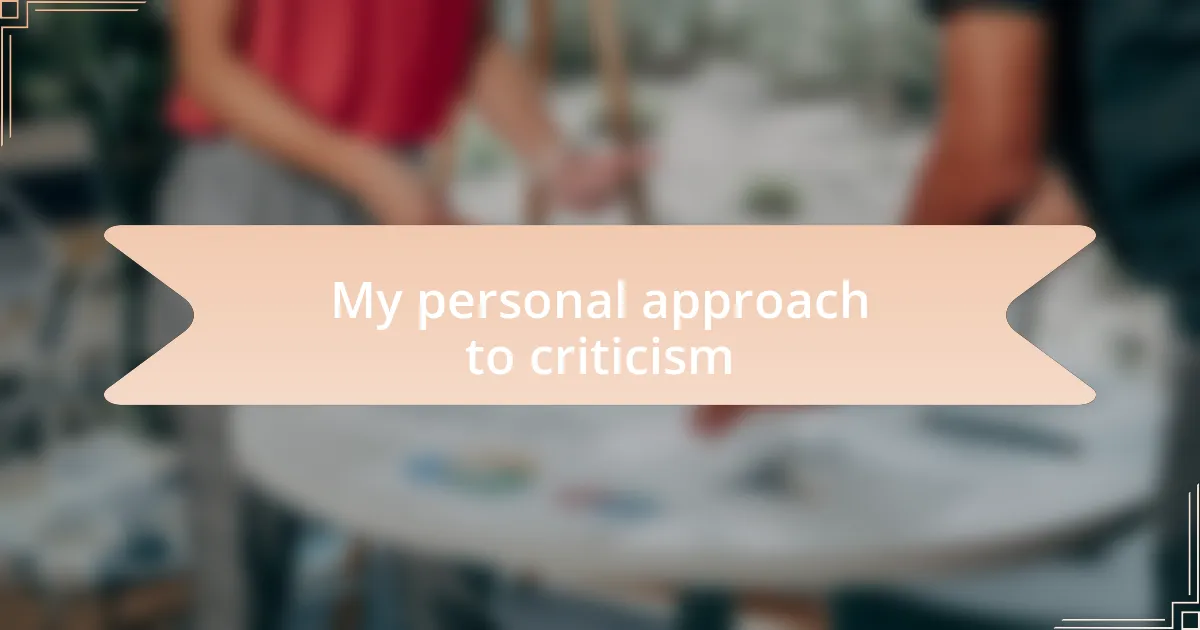
My personal approach to criticism
Navigating criticism isn’t always easy for me; I often feel a surge of vulnerability when someone critiques my work. I well remember a time when a mentor pointed out that my infographic lacked a cohesive color scheme. My initial instinct was to feel defensive, but I took a breath and realized their concern stemmed from a genuine desire to help. Have you ever felt that way, where the sting of feedback quickly transforms into a learning opportunity?
When I approach criticism, I remind myself that it’s an essential part of growth, especially in the creative process. I vividly recall attending a workshop where an expert emphasized that every critique is a stepping stone to excellence. Reflecting on that moment, I focused on unpacking the feedback instead of dwelling on my initial reactions. Isn’t it fascinating how shifting our mindset can reveal new possibilities?
I’ve also learned to welcome diverse perspectives. There’s an instance from a recent project where a colleague suggested a bold new layout, which at first, I resisted. However, after considering their viewpoint, I embraced the change and the final product turned out even better than I could have imagined. Do you find that sometimes the best ideas emerge from unexpected places? This experience has taught me that criticism can lead to powerful transformations when I open myself up to it.
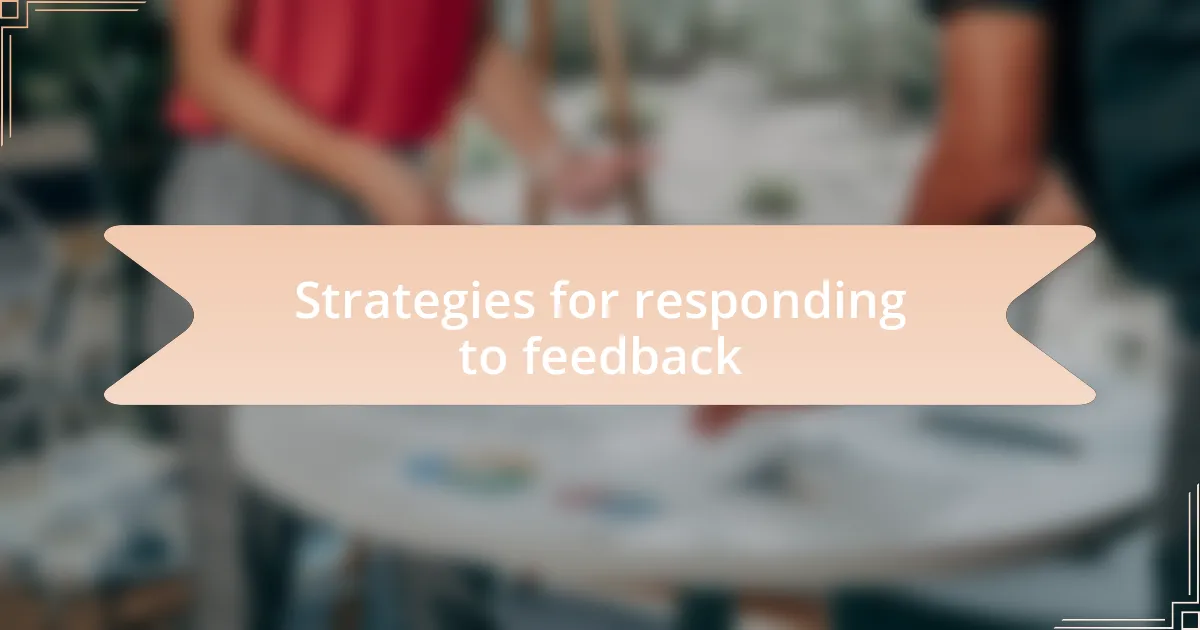
Strategies for responding to feedback
One effective strategy I use when responding to feedback is to seek clarification. I vividly remember a time when an audience member critiqued my infographic’s data representation. Instead of reacting defensively, I asked, “What specifically did you find confusing?” This simple question not only provided me with clearer insights but also demonstrated my openness to enhancing my work. Have you ever found that asking the right questions can lead to better understanding?
Another tactic I employ is to take a moment before responding. There have been instances when feedback felt personal, catching me off guard. By allowing myself a brief pause to process my emotions, I often find that I can respond more thoughtfully and constructively. This approach allows me to view criticism as an opportunity for dialogue rather than a confrontation. Do you think giving yourself a moment could transform your interactions with feedback?
Lastly, I believe in expressing gratitude for the feedback received. In a recent project review, a peer pointed out elements that didn’t resonate with our audience. Although my initial reaction was disappointment, accepting their feedback with a “Thank you, I appreciate your insight” helped me focus on improvement rather than defensiveness. It’s intriguing how a simple expression of thanks can foster a more positive conversation and encourage future collaboration, don’t you think?

Lessons learned from criticism
Understanding the lessons learned from criticism has profoundly shaped my creative process. I recall a time when a reviewer pointed out that my infographic’s color scheme was overwhelming. At first, I felt defensive, but reflecting on their perspective revealed that simplification could enhance clarity. It made me realize that sometimes, stepping back allows us to see the broader picture more clearly.
Another lesson stems from embracing vulnerability. In a team meeting, one of my colleagues voiced concerns about the accuracy of my sources. Initially, it stung, but then I recognized that admitting my flaws could foster trust and authenticity in my work. I pondered, have you ever noticed that sharing your uncertainties can actually strengthen your connections with others?
Lastly, criticism can serve as a catalyst for personal growth. On one occasion, a detailed critique helped me refine my ability to communicate complex data effectively. I learned that every piece of feedback is an opportunity to improve, not just for the current project but for my future endeavors as well. Isn’t it fascinating how what feels like a setback can actually propel us forward?